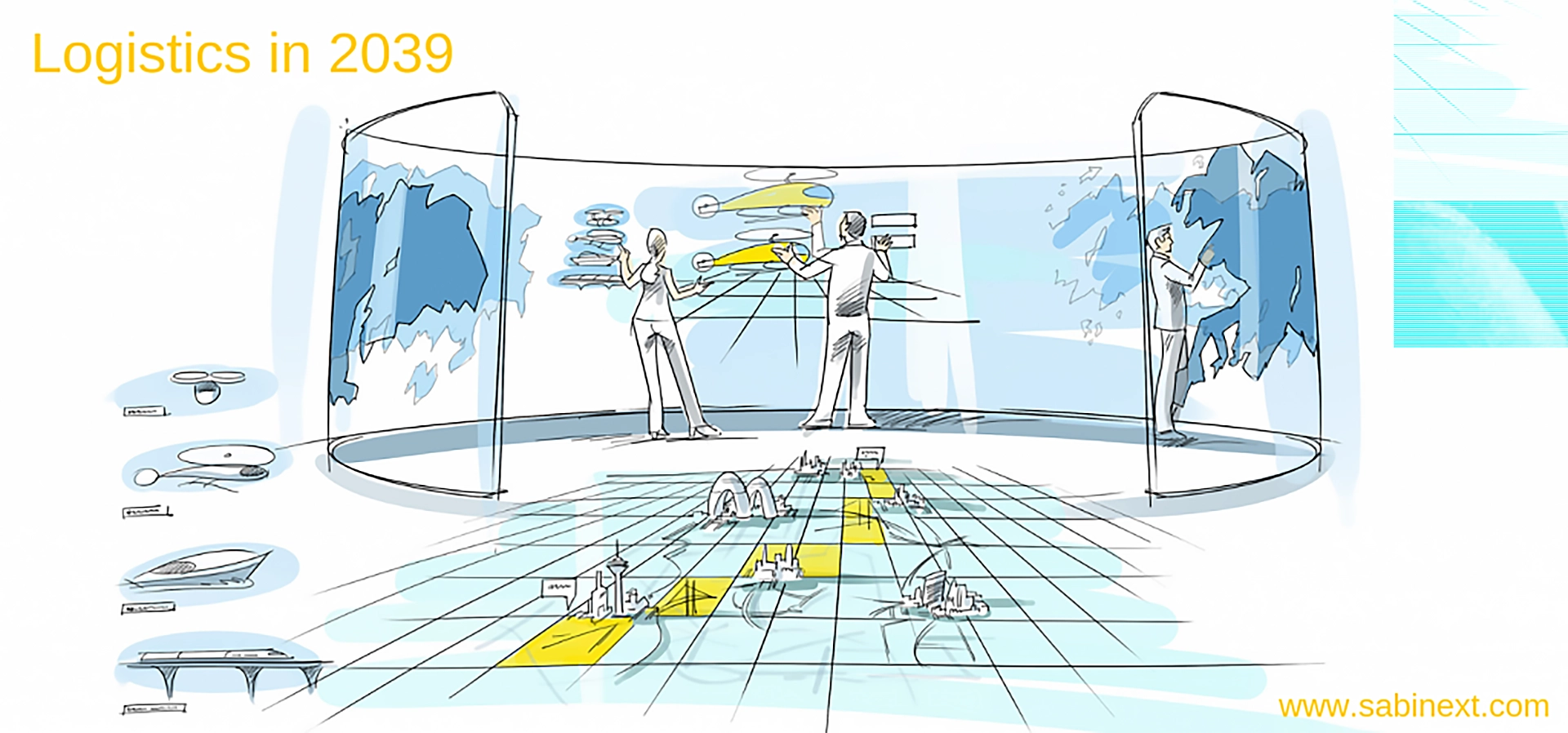40 Years in Logistics –1999-2039: How Will the Past Shape the Future?

In 1999, DHL Consulting was founded. Just as the internet had been freshly established as a common medium back then, today we find ourselves right in the middle of the digital revolution.
Having been a part of this company from the very beginning and witnessing how we took the first digital steps, I am proud of how far we have come – and how resourceful we have been with not just adapting to the new digital world, but how we stayed ahead of the curve.
What Aspects Had the Biggest Impact – And Will Continue To Do So?
Let’s now take a look back over the last exciting 20 years: What are the topics that set the tone in the past, that are certain to prove most important for the next 20?
1. Technology and the Importance of Data
Imagine the world in the final year of the last millennium: It was the time everybody suddenly had an internet connection at home and not only business managers, but regular teenagers sported mobile phones.
It didn’t take much time for the two information technologies to merch, setting the tone for the smartphone era. Communication, information consumerism, and retail changed drastically around 2007 when the first iPhone was launched, and 3G-networks were established. People increasingly purchased goods without setting foot in a store.
Today, the age of full connectivity has begun: 5G-networks, the Internet of Things and Artificial Intelligence (AI) – all working with and being fed by data, have and will continue to change the world as we know it. Not knowing what was going on with your shipment was normal in the pre-internet days. Today, every step can be made visible, and algorithms continuously optimize the supply chain.
Besides increased connectivity, automation technologies make their mark: More and more robots, industrial drones and autonomous vehicles are shaping the logistics landscape.
What Will the Logistics Industry Look Like in 2039?
I am convinced that there will be a separation of physical flows and data flows. Data will be continuously analyzed at all times, and algorithms will forecast, optimize and steer the physical flows.
The issue of data ownership will be enforced, and data owners and collectors will, therefore, play a very central role in the workflows and financial set-ups of the future. Data will not be contained to one stakeholder but will be collected and shared across different companies.
Automated Platforms Instead of Dedicated Supply Chains
Also, shared and fully automated logistics physical and digital platforms will very certainly supersede dedicated supply chains.
In my opinion, it is for example highly likely that platforms for autonomous delivery vehicles, especially in last mile delivery, or fully automated warehouses will play a huge role in the future logistics industry.
Warehousing platforms that work similarly to the Airbnb model are another example: Online search, instant booking of warehousing space, and flexible contract handling are going to become top priorities in warehousing.
2. New Work
The general work philosophy has undergone quite a revolution since I entered the workforce.
Climbing the career ladder, a good salary, having my own office and a company car were important motivators for me. Many companies valued strong, charismatic leaders, top-down decision making and low-risk behavior. However, young professionals at the end of the millennium started to alter their priorities and thought patterns, and (among other factors) caused this paradigm to shift.
Today, the picture is a different one. Individual and collective purpose, agility, a “fail culture,” entrepreneurial spirit within companies, the dissolution of space and time through digital appliances – all of these are aspects of a New Work that characterize the end of this century’s teen years.
Also new technologies, for example, AI, drive the complexity of problems and solutions. Because of the high complexity, leaders can no longer be the knowledge owners and need to rely on the know-how of their teams. Experts can work quite autonomously. With this, approaches to problem-solving are changing quickly: Higher agility, risk-taking, and quick failing have become essential.
Digitalization Enforces Flexibility, Trust, and Courage
Digitalization obviously plays a big role in the world of New Work. Mails and documents can, for example, be read and edited anywhere at any time. Teams can work together virtually over Skype.
I am convinced that dedicated offices for managers, pronounced hierarchies and a misbalance between male and female leaders will soon be a thing of the past – fortunately, this exciting transformation has already begun.
I, too, have moved out of my office and work more flexible in terms of where and when. My experiences with the new set-up I will address in a dedicated article.
What Will Our Working Lives Look Like in 2039?
It will be very common for a majority of people to work from anywhere and decide which hours they work. In general, I am positive that fewer hours of work will be required. Transactional, repetitive tasks will be done by intelligent machines such as robots freeing up time for people to learn and develop, also in terms of lifelong learning.
Teams will be formed in agile ways to solve problems based on capabilities and interest.
My prediction for what our working lives will look like in 20 years, therefore, is: 100 percent flexibility, 100 percent diversity and 100 percent collaboration between humans and machines.
3. The Importance of Our Planet
Today the impact of climate change is indisputable; thinking sustainably has become a (business) necessity. Our planet is the most important asset. In the specific case of our transportation-intense industry, the search for green solutions isn’t limited to reducing carbon emissions. Logistics companies are looking at all aspects of sustainability including air pollution, noise pollution, and solutions for our crowded city infrastructure.
Innovation in this area is already proving its potential to disrupt, seen in, for example, electric mobility and the emergence of digital asset pooling solutions for freight shipping. However, it is a long way to go – and in my opinion, we need to be bolder here.
What Will Our Planet Look Like in 2039?
In an ideal world, we would have managed to move a big step towards our 2050 emissions target: Zero emissions.
In 2039, I envision co-operation enabled by digitalization, circular environments and shared economies designed to cut costs and reduce waste, replacing linear ‘take-make-dispose.’
I believe that by then we will have gone a big step towards decarbonizing heavy transport, like airfreight or seafreight. This we will achieve together with partner- and network-platforms.
Outlook
The last 20 years have been amazing, and a lot has changed. But the speed of innovation and change will increase even more over the next 20 years.
I am looking forward to these changes and want to encourage you all to do the same. Let´s start drawing our future and already start pushing for our visions to come alive.
In my next articles, I will deep-dive into the different aspects of the future of logistics, elucidate visions and go into specifics. I am very much looking forward to discussing with you in the comments, or on my Twitter or LinkedIn channels.






